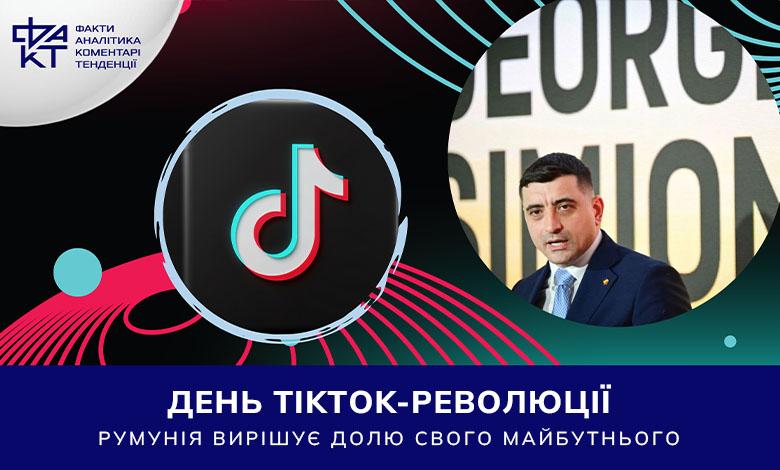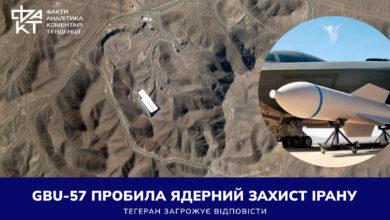An abolished president and an indestructible TikTok: the far-right in Romania is not giving up its positions

This Sunday, Romanians are electing their president again. Re-voting is happening after last year’s political shock: the unexpected success of far-right candidate Calin Georgescu, accusations of Kremlin meddling, protests across the country and the annulment of the election results shook the country and questioned its democratic stability. After the annulment of the election results, the Romanian authorities found themselves under a barrage of criticism not only from within the country, but also from abroad. Representatives of far-right forces around the world, including high-ranking officials of Donald Trump’s administration, accused Bucharest of attacking freedom of speech and disregarding the “will of the people.” US Vice President J.D. Vance stated sharply: “You just canceled the election because you didn’t like the result”.
Georgescu, who is suspected of having ties to Russia, was banned from the new tour. However, the ideas that he voiced – anti-European, anti-system, with open sympathy for authoritarian practices – found a response among a significant part of society. And although Georgescu himself will no longer be on the ballot, his voters have not disappeared. Now their vote can be converted into a victory by George Simion, the charismatic, populist leader of the far-right opposition who leads the ratings ahead of the vote.
Protest as a driver of choice
Romania is a state with thirty years of democratic experience, a member of the EU and NATO. At the same time, disappointment accumulated inside the country. Corruption, social inequality, the outflow of young people, the inability of the political elite to offer a new vision — all this made protest the main driver of electoral behavior.
Simion actively exploits these sentiments, promoting harsh rhetoric against the “old elites”, promising a break with Brussels, the end of support for Ukraine and “national revival”. His campaign appeals to national pride, historical grievances and fatigue with traditional politics. For the first time in a long time, it is the far-right candidate who has a chance to enter the final with a leading position.
Points of resistance: who can stop the far-right breakthrough
However, Simeon’s final victory is not guaranteed. If none of the candidates receives more than 50% of the votes on May 4, a second round will be held on May 18. And it is then that the national populist can meet strong opposition from the centrist camp.
Moderate contenders include Crin Antonescu, an experienced politician backed by the governing coalition, and Nikušor Dan, a popular mayor of Bucharest with a reformer image. Both have the potential to unite the pro-European electorate and mobilize the votes of those who do not wish to see Romania follow the path of Orbán or Trump.
Viktor Ponta, the former prime minister and ex-leader of the Social Democrats, also unexpectedly became active. His support among the center-left could play a decisive role in the second round.
The rise of the far right: part of a wider trend
Romania is not an isolated case. The political changes in this country are taking place against the background of a wider phenomenon that covers a large part of Europe. Far-right parties, which until recently were marginal or considered protest, are now turning into powerful players. They receive stable support in France, Italy, the Netherlands, Hungary, Germany, Slovakia and now in Romania.
This rise is based on several fundamental processes. First of all, it is about global fatigue from traditional parties. Voters do not see centrist forces dealing with contemporary challenges: economic instability, migration, growing inequality, inflation, threats to identity. The far-right provides simple answers to complex questions, often resorting to emotional rhetoric, conspiracy theories and xenophobic motives.
In France, Marine Le Pen’s National Union is confidently heading to the Elysee Palace, taking first place in the polls. Italy has been ruled by the far right of George Maloney for a year. In the Netherlands, right-wing radical Geert Wilders won the last election. In Germany, the AfD is confidently ahead of the ruling coalition in the east of the country, despite attempts to officially limit its activities. In Hungary, Viktor Orbán turned the country into a “model” right-wing populist state.
All these parties share several common themes: criticism of migration, skepticism or hostility to the European Union, conservative and patriarchal values, often sympathy for Russia or at least a refusal to support Ukraine. And although they may differ in style: from the technocratic Maloney to the outrageous Wilders, the essence of their political message is the same: the world has not changed for the better, and only they can restore the “lost greatness” of nations.
Romania, with its lingering socio-economic difficulties, weak institutions and low levels of trust in politics, has become fertile ground for these trends. Although the majority of citizens supported pro-European forces in December’s parliamentary elections, the right-wing populists from the AUR won second place. Now, according to the latest opinion polls, they have become the leaders, which indicates the growing popularity of nationalist, Eurosceptic rhetoric.
Support for George Simion and the AUR is not just a result of protest against rising prices or inequality. This is a symptom of a deeper structural shift, where politics is increasingly reduced to the opposition of “us” and “them”: we are ordinary Romanians, they are the political elite, Brussels bureaucrats, migrants, globalists, LGBT activists, etc. This discourse erodes democratic norms and creates a demand for a “strong hand”, a “new order” and “hard decisions”.
Despite the fact that each country has its own characteristics, the very spread of similar rhetorical models and mobilization strategies indicates the presence of a single wave — far-right, post-modern, anti-globalist. Its consequences for Europe can be long-term: from blocking decisions within the EU to threats to democratic institutions and foreign policy priorities, in particular regarding support for Ukraine.
TikTok again?
Romanian voters again turn to TikTok for advice during re-voting of canceled elections, the agency expressed concern about electoral processes in Romania Reuters.
Millions of young Romanians are once again turning to TikTok — not only for entertainment, but also for political signals. It was this platform that played a key role in the scandalous election, the results of which were canceled due to suspicions of Russian interference. With more than 9 million TikTok users in a country of 19 million people, the platform has become a breeding ground for manipulative content.
Last year’s campaign was accompanied by a wave of activity by suspicious accounts spreading political messages – in the end, they became one of the arguments for the annulment of the results of the November 24 vote. In Moscow, as expected, any interference is denied.
Far-right candidate George Simion actively uses social media as a main tool for mobilizing the electorate, especially TikTok. Its account has over 1.3 million followers on the platform and is one of the most powerful political presences in the Romanian social media segment. Pinned videos reach 5.8 million views. In the comments we can read: “I’m 19 years old, I saw Calin Georgescu on TikTok and made all my family members vote for him. So I will continue to vote for him and you should do the same!”; “I suggest not turning on the TV until the presidential election!”; “Brother George, on Sunday we will make you the president of Romania”; “I can’t wait to go to the polling station tomorrow morning to vote for you in Madrid, I vote for you with love! Go and vote, my dears, Simion is the president in the first round, let’s steal the second round from them”.
Simion effectively combines emotionally charged rhetoric, direct appeals to the electorate, and nationalist messages, a style that appeals particularly well to younger audiences. His videos are often designed as motivational speeches against the background of music or historical images, and the key themes are “betrayal of national interests”, “fighting corruption” and “national revival”.
TikTok allows Simion to bypass traditional media and directly address a disillusioned voter, especially young people from regions that feel abandoned by the state. His popularity on social networks reflects a broader trend: the transition of political struggle from parliament halls and TV studios to smartphones and feed algorithms.
The importance of the choice: not only for Romania
The stakes in this campaign go beyond domestic politics. The choice the Romanians will make will have geopolitical significance. Will Romania remain on the pro-European course, advocating support for Ukraine and solidarity with the West? Will it choose the path of populism, isolationism and rapprochement with authoritarian models?
The EU is closely following the Romanian elections, as Romania has been one of NATO’s most consistent partners in the Black Sea region. The victory of the far-right can not only shake its foreign policy course, but also create a new point of instability on the eastern flank of Europe.
May 4 will be the first test for Romanian democracy after the high-profile disruption of the previous vote. And May 18 is a potential solution, where not only the name of the new president will appear, but also the strategic direction of the country for the coming decade.





